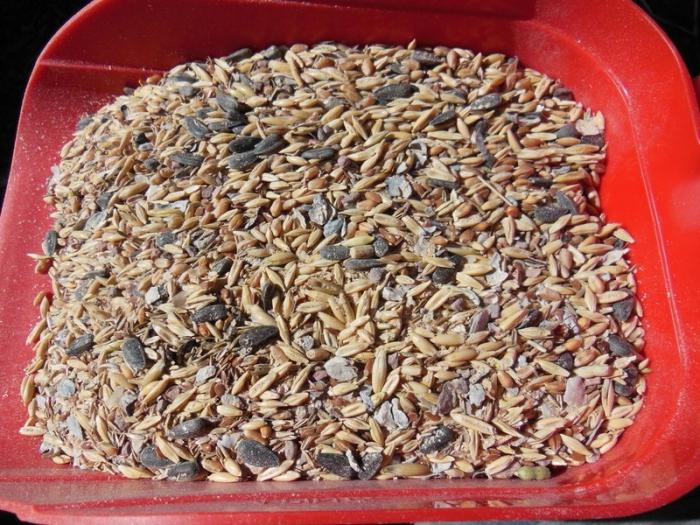In industrial poultry farming special diets are compiled, which are tested by time and practice. In poultry farming, it is not always possible to provide chickens with feed according to industrial standards, but there is a set of feeds that will give the necessary productivity and provide high-quality nutrition of birds.
There are such types of food for laying hens:
- compound feed;
- cereals;
- greens, vegetables and table waste.
Compound feeds for poultry are produced at specialized factories. They include crushed (crushed) grain, vegetable fats, premixes (vitamin supplements), salt and meat and bone meal. For chickens, crushed limestone is often included in compound feeds. On sale feed for laying hens can be in the form of crushed, as well as in the form of granules. Practice proves that granular feed is better stored, as air circulates freely between individual granules. In crushed feeds, air circulation is difficult, therefore, their shelf life is short, they often absorb moisture from the air, self-heat and acidify.
Feed for birds fed dry or in the form of mash. Here the preferences vary. Some people think that steamed food is better absorbed by chickens, others believe that in natural conditions birds cannot consume wet food, so breeders prefer to use only dry food. Who is right? Observations of birds showed that wet food is absorbed faster and better, and feeding only with dry food leads to the fact that the body removes part of the eaten food without absorption. Therefore, in domestic poultry farming, feed is best given in the form of pre-steamed mash makers. At the same time, cellulose in the composition of the feed partially breaks down into short molecules, which also contributes to better absorption of the feed.

At home breeding of chickens, the share of compound feeds is no more than 50% of their diet, since part of them can be replaced with other feed available in the farm. Feed for laying hens is supplemented with ordinary grain, and wheat with great pleasure pecked by a bird. But to give only one wheat means not to add a number of necessary components that are not initially present in it. Sunflower seeds will add the necessary vegetable fat, barley - fiber, which is necessary to improve digestion. Corn pecks only after partial crushing, otherwise it is almost not absorbed by chickens.
How much grain is needed? Researchers have proven that feed for laying hens should contain at least 0.12 feed units daily. For one feed unit, the energy value of 1 kg of oats is taken. But hens almost do not peck oats, it is practically not acquired by them. Therefore, recalculation is performed on wheat, which has great energy value. It is believed that chickens should be given 115-117 g of feed, calculated on wheat.
The feed for laying hens in the household is supplemented by greens. In summer, free-range birds constantly peck all kinds of herbs available to them. In winter, they enjoy eating cabbage, nettle brooms, harvested in summer, sliced pumpkin and other similar lures.
In winter, boiled potatoes will also be a useful addition to mixes, but they should not exceed 30% of the total composition. It is important even in winter to give the mixers chilled, otherwise the birds can burn the esophagus, which will lead to diseases of the gastrointestinal tract and death. For the prevention of gastric diseases in the winter, you need to give the chickens chopped hot pepper. It contains many different vitamins, and also helps to destroy any infection in the poultry stomach. River sand should also be included in the feed for laying hens, which helps mechanical grinding of coarse food, including grain, increasing feeding efficiency.